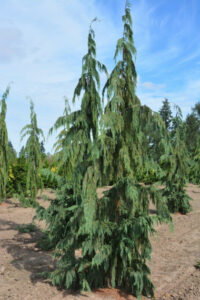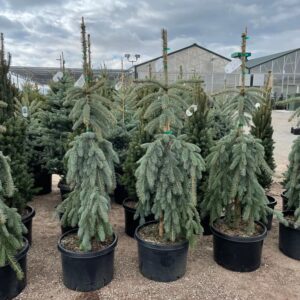Weeping Coniferous Trees for your Northwest Landscape
In this blog we will go over how weeping tree variations came to be and our favorite ones to use in landscaping projects here in the Vancouver, WA, area.
Nursery
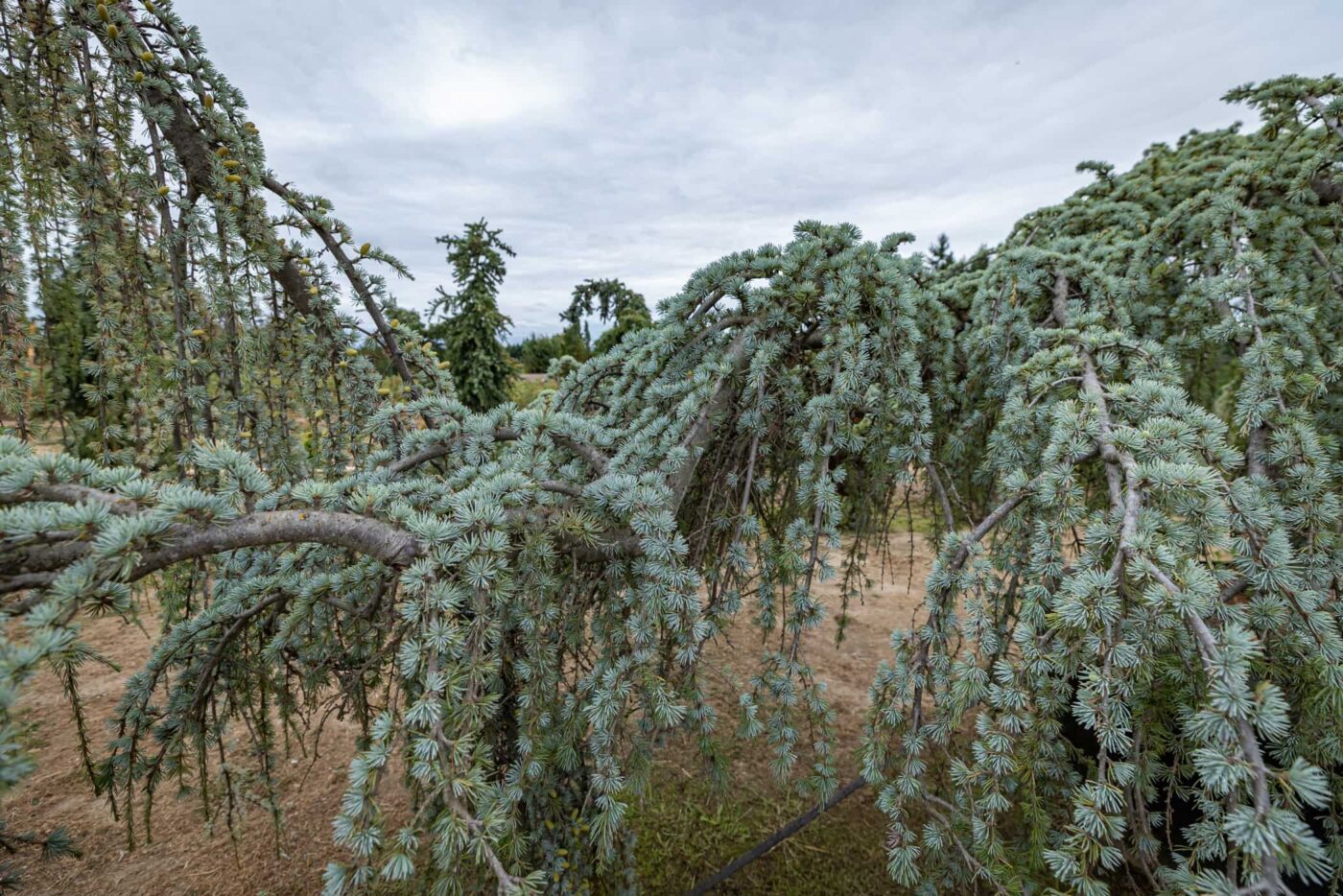
You’ve likely noticed variations of common trees with the descriptor “weeping” preceding the species name. In this blog we will go over how weeping tree variations came to be and our favorite ones to use in landscaping projects here in the Vancouver, WA, area.
For Weeping Trees and More, Visit our Nursery in Ridgefield, WA
Weeping trees get their name from their branches’ inclination to grow down towards the earth, rather than up and out towards the sun and sky. The strange growth pattern adds character and charm to these trees, but how did they come to be?
It is believed that weeping trees first originated in nature from a genetic mutation that alters the growth of new cells. As evident from the smaller stature of weeping trees, specifically coniferous ones, this mutation hinders the plant from reaching the full size of its non mutated cousin. This suggests that the mutation must alter genes pertaining to size as well as genes pertaining to structural rigidity. To combat this short nature of weeping trees, some daring landscapers will graft branches of a weeping specimens onto non-weeping ones.
What does this mean? Well, it means we can have beautifully unique sequoias and pines as ornamental trees without worrying about them growing to the size of skyscrapers. Here are some of our favorite weeping coniferous trees perfect for the Pacific Northwest.
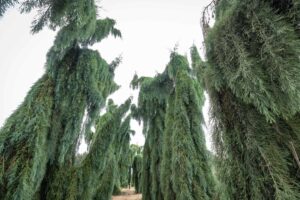
Weeping Giant Sequoia
The Weeping Giant Sequoia is one of the most iconic weeping trees and for good reason. This tree can grow up to 30 feet tall with an extremely variable spread depending on how vertical (or not) the trunk grows. We recommend staking these trees when they are younger to ensure the growth of the trunk is as vertical as possible unless desired otherwise.
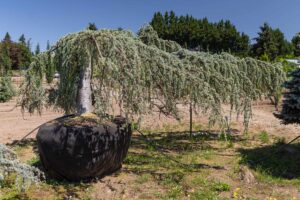
Weeping Blue Atlas Cedar
Perhaps the most striking of all weeping conifers is the Weeping Blue Atlas Cedar. Whether it be the striking blue-green needles or the elegant draping of its branches, this specimen tree ceases to amaze and impress us with its beauty. These trees can grow 10-15 feet tall with a spread of 15-20 feet. We also recommend training the horizontal growth of these trees as they can become quite expansive and might intrude on other parts of your landscape if not guided.
Weeping Alaskan Cedar
Another popular weeping conifer is the Weeping Alaskan Cedar. These specimen trees have a much more predictable vertical growth pattern than the two previously mentioned species. This species reaches a max height of around 30 feet with a spread of around 15 feet. This tree is most notable for its drooping cedar needle clusters.
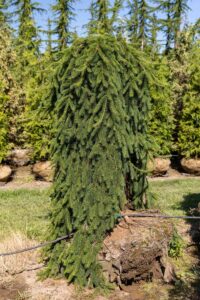
Weeping Norway Spruce
The Weeping Norway Spruce would not be out of place in a Dr.Suess book. This quirky tree is known for a dense outer layer of needles that droop downward and then curl up towards the sky at the tips. They grow to about six feet tall with a spread of around 15 feet. We recommend staking these while they are young to ensure a sturdy trunk for the branches to weep from.
Weeping Blue Spruce
Last on our list is the Weeping Blue Spruce. These specimen trees are a great alternative and complementary to the Weeping Blue Atlas Cedar. They grow to about 20-30 feet when staked properly with a spread of 5-10 feet.

